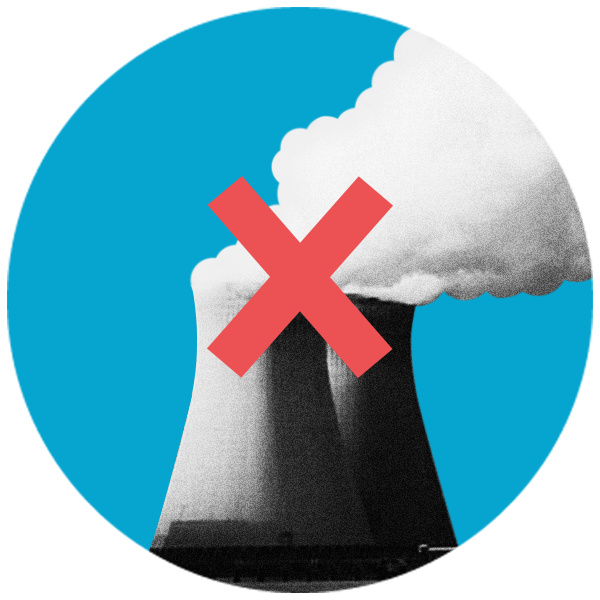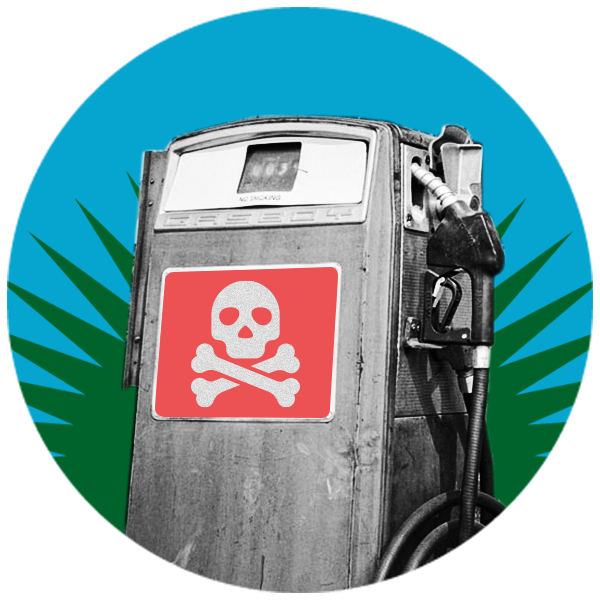Six Climate-Positive Actions to Help Rebuild Economies From COVID-19 Pandemic
COVID-19 has had a devastating impact on people’s lives and jobs. As governments spend huge amounts of money to recover from the economic downturn induced by the coronavirus, the Secretary-General has said “we must deliver new jobs and businesses through a clean, green transition.”
The global economy is expected to shrink by almost 3.2% this year, according to the IMF, which would be the largest contraction in economic activity since the Great Depression, and far worse than the 2008-2009 Global Financial Crisis. In 2020 alone, millions of people—anywhere from 35 to 60 million--could be pushed into extreme poverty, reversing the declining global trend of the last twenty-plus years. Some 1.6 billion people working in the informal sector, including many in the so-called “gig economy,” are estimated to be at risk of losing their livelihoods and many lack access to any form of social protection.
Faced with an unprecedented global shut-down to contain the spread of covid-19, governments quickly recognized that they had to act decisively to limit further economic and social damage. To restart their economies, many governments announced fiscal and monetary measures at a scale never seen before—more than US$9 trillion as of the summer 2020. While there might be an impulse to restore the economy to what is was before the COVID-19 pandemic, it is now clear that we cannot go back to the previous status quo.
The Secretary-General highlighted the choices before governments, saying, “We can go back to where we were, or we can invest in a better, more sustainable future. We can invest in fossil fuels whose markets are volatile and whose emissions lead to lethal air pollution. Or, we can invest in renewable energy, which is reliable, clean and economically smart.”
The transition to a net zero economy will produce vastly more new jobs – that are also healthier and safer than jobs in the fossil fuel industry. The ILO found that climate action, with a focus on the energy sector, can generate 24 million new jobs by 2030. The IEA estimates that 9 million jobs could be created every year for the next three years with the proper investments in sustainable energy. The New Nature Economy report found that a new economic model based on working with nature rather than against it could generate up to $10.1 trillion in annual business value and create 395 million jobs by 2030.
Today, about 1.2 billion jobs, 40% of total employment depend on a healthy environment and $44 trillion of economic value added – over half the world’s total GDP – is moderately or highly dependent on nature. For instance, agriculture production largely depends on pollination by bees especially for fruits, vegetables, fiber crops and nuts. Without their contribution our ability to produce enough food would be severely hindered.
The cost of ambitious climate action is often identified as a barrier to action, yet the human and economic costs of inaction are much higher. For instance, heat stress alone is projected to reduce total working hours worldwide by 2.2 per cent and global GDP by US$2.4 trillion in 2030.
Public spending in key areas can help drive economic and job growth while reducing climate impacts. Areas ripe for these investments include:
- Infrastructure investments that range from renewable energy assets, (storage, sustainable hydrogen, grid modernization) to health and social care, social housing, and the digital economy.
- Buildings that are energy efficient including renovations and retrofits with improved insulation, heating, and domestic energy storage systems.
- Education and training to help people who have lost their jobs due to COVID-19 find new and gainful employment and to address the structural shifts required to decarbonize the economy.
- Investing in nature- for ecosystem resilience and regeneration including restoration of carbon-rich habitats and climate-friendly agriculture.
- Research & development to assist rural economies in embracing sustainable agriculture, ecosystem regeneration, or accelerating renewable energy installations.

No bailout for polluting industries
Do not bailout polluting industries unless these industries commit to become Paris aligned.
“Where taxpayers’ money is used to rescue businesses, it must be creating green jobs and sustainable and inclusive growth,” said António Guterres. “It must not be bailing out outdated, polluting, carbon-intensive industries.”
Companies that understand the risks of climate change on their bottom line and which are able to identify opportunities to pivot to sustainable business models are likely to be more financially sustainable than others and will create more value for their shareholders, their customers and their communities. Over the past 10 years, companies with green activities have performed better than fossil fuels stocks, and companies with stronger Environmental, Social, and Corporate Governance portfolios have consistently withstood the crisis better and outperformed conventional portfolios on financial markets.
Lasting government funding – in the form of direct subsidies or other forms of financial support like loan guarantees – should therefore depend on clear climate commitments from businesses. At a minimum, public “bail outs” could include certain obligations by companies. These could include an obligation to provide climate-related financial risk disclosures, as well as obligations to set clearly defined initial decarbonization targets for 2030, in line with an objective of net-zero emissions by 2050. Additionally, companies that receive taxpayer money should have an investment plan outlining how new investments will contribute to the companies’ emissions reduction trajectory.
In key heavy-emitting sectors, specific actions can be implemented to improve worker conditions and help put companies on a low-carbon trajectory. For instance, support to the airline industry could be conditional on a commitment to using more sustainable aviation fuel, or the support to power-intensive manufacturing activities could be conditional on a commitment to purchase 100% renewable power.
According to the IEA, the world provided US$320 billion in subsidies for fuels in 2019. Of that, US$150 billion went to subsidize oil products, US$115 billion for electricity, US $50 billion for natural gas and US$2.5 billion for coal. These estimates do not fully account for all other forms of public-funded support to this sector, in addition to the direct subsidies. In simple terms, this means that taxpayers’ hard-earned money is used to improve the profitability of multi-billion-dollar corporations. This is why the UN Secretary General has repeatedly called on governments “to tax polluters not people”.
Implementing carbon pricing and fossil fuel subsidy reform can play an important role in boosting government revenues or putting expenditures to better use. Carbon pricing programs—that attempt to ensure that the price of fossil fuels reflects their true cost, including emissions-- generated around $44 billion in government revenues in 2018 according to the World Bank.
By creating new sources of public finance, carbon pricing can help governments invest more in other priority areas such as healthcare, education or infrastructure, and ensure a just transition of the workforce. For instance, workers whose jobs could be affected by a transition to a world powered by sustainable energy - like those working in the fossil fuel industry - should not be left behind. Instead they should be supported to find new and better income-generating opportunities.
Many countries are taking steps to reduce fossil fuel subsidies including many in the developing world. Nigeria, for example, has recently reformed its fossil fuel subsidy framework.
Over the past months, oil and gas markets have seen an unprecedented fall in demand combined with a price war, which brought the price of the barrel below the breakeven point for many producers. As a result, coal, oil, and gas prices are likely to remain low for the foreseeable future. This situation opens a window of opportunity for governments to phase out fossil fuel subsidies and accelerate the transition of the fossil fuel industry.
In oil and gas producing countries and coal-rich economies, fiscal stimulus could usefully be invested in an early phase-out of the least competitive assets, the diversification of their economy, and supportive measures for workers and regions which will be impacted by the transition.

Climate in all decisions
Take climate risks and opportunities into account in all financial and policy decisions.
Climate action must become the core focus – for both government and corporations. Smart businesses and investors are already moving to price climate risks better. But governments must do more.
The Secretary-General recently told ministers, “The COVID-19 crisis is having devastating impacts because of our past and present failures.”
These failures include not taking the Sustainable Development Goals seriously enough, not heeding warnings about the damage we are inflicting on our natural environment and taking risks with climate disruption. “We put up with inequalities within and between countries that have left billions of people just one crisis away from poverty and financial ruin. We have not invested adequately in resilience – in universal health coverage; quality education; social protection; safe water and sanitation. We have yet to right the power imbalances that leave women and girls to constantly bear the brunt of any crisis.”
Assessing the size of climate-related risks on the financial system, requires developing new analytical tools that, for example, integrate climate scenarios into regular “stress tests.” Stress tests are already conducted by regulatory authorities to assess the resilience and strength of banking institutions in adverse situations.
Central banks and financial supervisors must ensure that climate-related risks are well incorporated into individual financial institutions’ strategies and risk management procedures. While voluntary disclosure of climate-related risks in line with the guidelines of the Task Force on Climate-related Financial Disclosures(TCFD) is a necessary first step, it is increasingly urgent that this becomes mandatory to strengthen and systematize the integration of climate-related risks.
Financial institutions should better understand climate-related risks and consider them in their risk management procedures and investment decisions, as well as in their longer-term strategies. The changes in climate policies, new technologies, and growing physical risks will prompt reassessments of the values of virtually every financial asset, and firms that align their business models to the transition to a net zero world will be rewarded—while those that fail to adapt will be heavily penalized.
There has been a surge in interest from companies in adopting sustainable business plans and science-based targets that are compatible with a 1.5°C scenario, yet with a few notable exceptions, markets and major financial institutions have yet to take climate related risks seriously.

Work together
Work together to recover better.
Like the coronavirus, greenhouse gases respect no boundaries. No country, no company can succeed alone.
The Paris Agreement is built on cooperation between countries. Emissions anywhere affect everyone, everywhere, so it is imperative that countries work together to reduce emissions, build resilience, and reduce the worst impacts of climate change.
The Paris Agreement recognized that all countries do not have the same access to the same financial resources and technology. In particular, low- and middle-income countries that have contributed the least to the problem often need assistance from the higher-income countries to build the cleaner and greener renewable sources of energy, as well as measures to allow them to adapt to the impacts of climate change. To ensure sustainable development, international assistance is critical.
International cooperation and multilateralism are also essential to recover form the economic crisis ushered by the COVID-19 pandemic. Most countries have experienced a decline of their revenues with a simultaneous increase of their spending due to the pandemic. For many developing economies this means more public debt and bigger deficit. The pressure on governments, particularly in developing countries, to service these growing external debts limits their ability to roll-out policy measures that promote investments in productive sustainable assets (like renewable energy, or sustainable transport solutions). Addressing this widespread sovereign debt crisis is necessary to create the fiscal and policy space for governments to invest in a strong decarbonized, fair and resilient recovery.
Public development banks across the world, at the national, regional and multilateral levels, will need to work together to help countries identify and finance low-carbon, high-productivity activities and design appropriate industrial policies, to scale up their resources in sustainable infrastructure, and to support a just transition for workers and communities. They will also be critical in providing the financing for building resilience and helping countries adapt to climate change.
The impacts of climate change are now being felt in all countries, yet not all people are being impacted the same way. Climate change is hitting the poorest and most vulnerable, many of them women, the most. These are the people who live in areas that are subject to flooding or sea level rise, or who are affected most by heat stress or from water scarcity. Extreme weather and natural disasters displaced three times more people than war in 2019. More than 95 percent were the result of weather-related hazards such as storms and floods.
Supporting adaptation efforts, such as flood protection, resilient roads, and resilient buildings, and improving the resilience of communities should be a priority of the recovery packages. For instance, public work programs designed to provide income to the low-income households could prioritize projects which provide adaptation co-benefits, such as flood of fire protection, ecosystem restoration or drip irrigation.
Transitioning to a carbon neutral economy could also adversely impact people who have made their living in heavily polluting industries which are also extremely harmful for peoples’ health, such as coal mining. That is why we need a just transition that ensures employment opportunities for all people. In addition, measures to address climate change should not create new costs for those unable to afford them, without government support to meet those costs. The costs of addressing climate change must be borne by those responsible for causing pollution.
Action to limit climate change is action to achieve the Sustainable Development Goals. These are Goals for all countries and all people. These goals are still achievable if governments, businesses, cities, civil society and each and every one of us is fully mobilized to demand results now, and to demand that no one is left behind.



